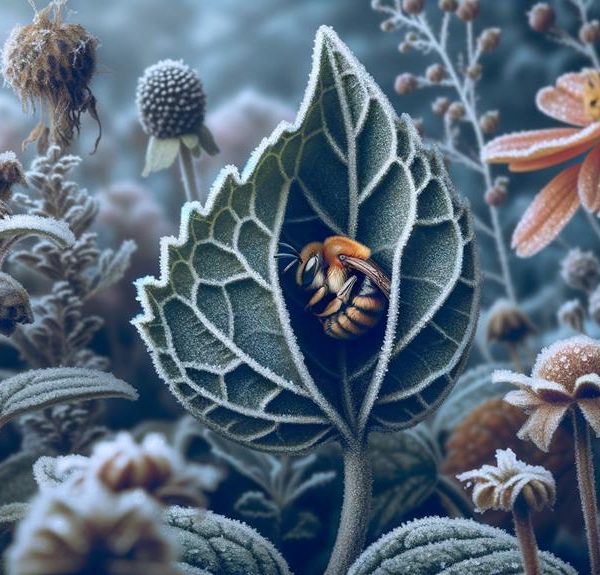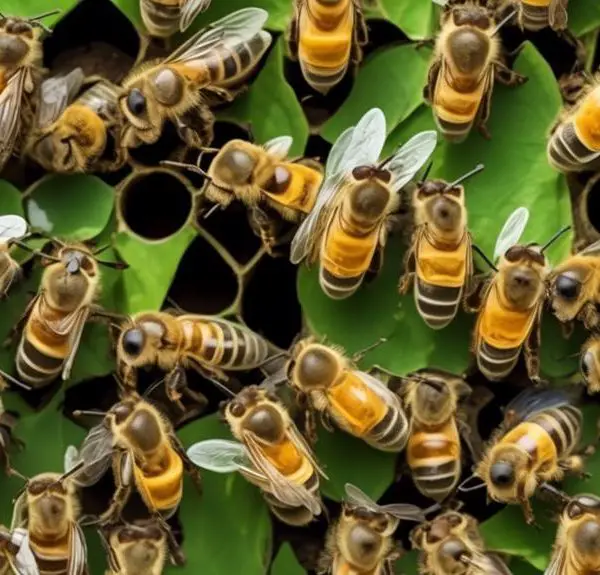Buzz into the captivating world of leafcutter bees and their enchanting affinity for lavender.
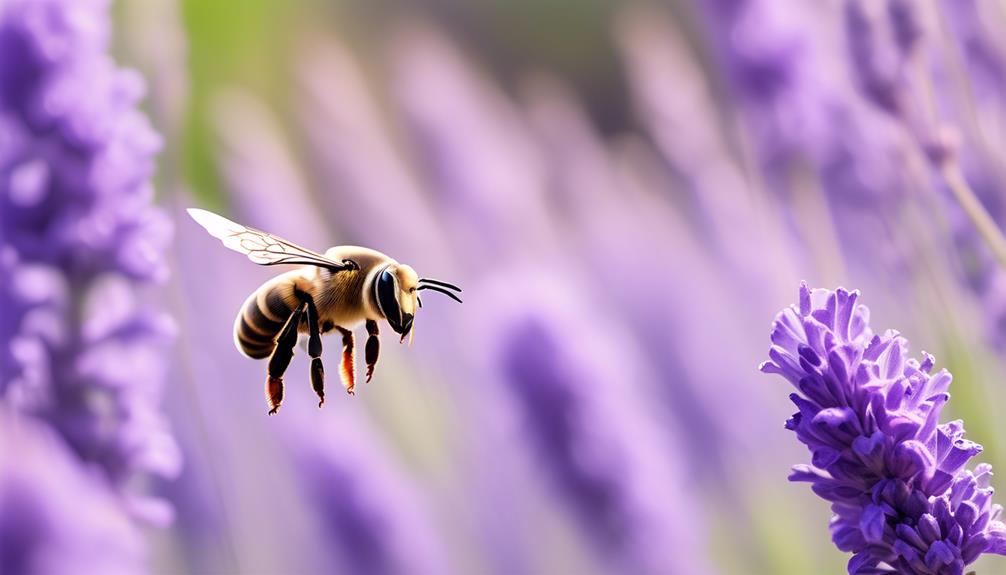
Do Leafcutter Bees Like Lavender
Imagine being a leafcutter bee, buzzing through a garden painted with a myriad of colors, only to catch a whiff of an intoxicating scent that stops you dead in your tracks – lavender.
As you're drawn towards its alluring aroma, you might wonder if this attraction is mutual. Do leafcutter bees actually like lavender?
Well, you're about to embark on a journey through the world of these fascinating insects and their intriguing relationship with this aromatic plant.
Ready to unravel this enigma?
Key Takeaways
- Leafcutter bees are solitary creatures that build their own nests and do not live in colonies.
- They cut out neat, circular pieces from leaves to construct their nests and seal the entrance with chewed leaves.
- Leafcutter bees have a mutualistic relationship with plants, including lavender.
- Lavender plants are highly attractive to leafcutter bees due to their profuse, aromatic blooms, and the bees play a vital role in the reproduction of lavender through cross-pollination.
Understanding Leafcutter Bees
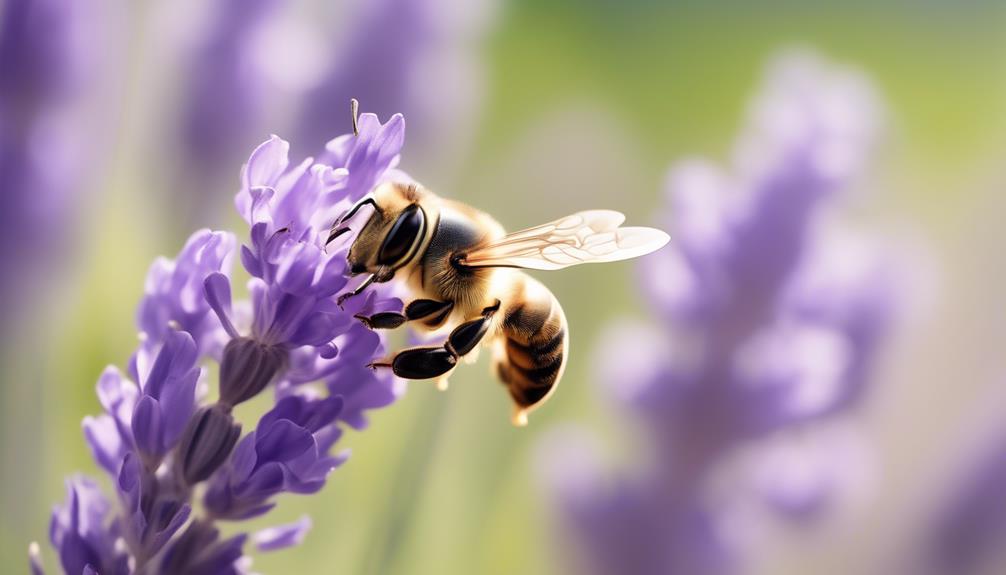
Diving into the world of leafcutter bees, you'll find these fascinating insects are unique pollinators with an interesting life cycle and behavior that play a critical role in our ecosystem.
Unlike honeybees, they're solitary creatures, each female building her own nest instead of living in colonies. They're named for their distinctive behavior of cutting out neat, circular pieces from leaves, which they use to construct their nests.
A closer look reveals that their life cycle is intricately tied to their environment. The female bee lays her eggs in the nest, then seals the entrance with chewed leaves, providing protection for the larvae. Within the nest, she also leaves a food source: a mix of nectar and pollen. Hence, you can infer that leafcutter bees have a mutualistic relationship with plants. They assist in pollination while the plants provide them with food and nesting material.
Their foraging habits make them exceptional pollinators. Unlike honeybees that wet the pollen to carry it, leafcutters carry dry pollen on their hairy abdomen, dropping more pollen from flower to flower. Thus, you can see how these bees contribute significantly to biodiversity and plant reproduction.
The Allure of Lavender
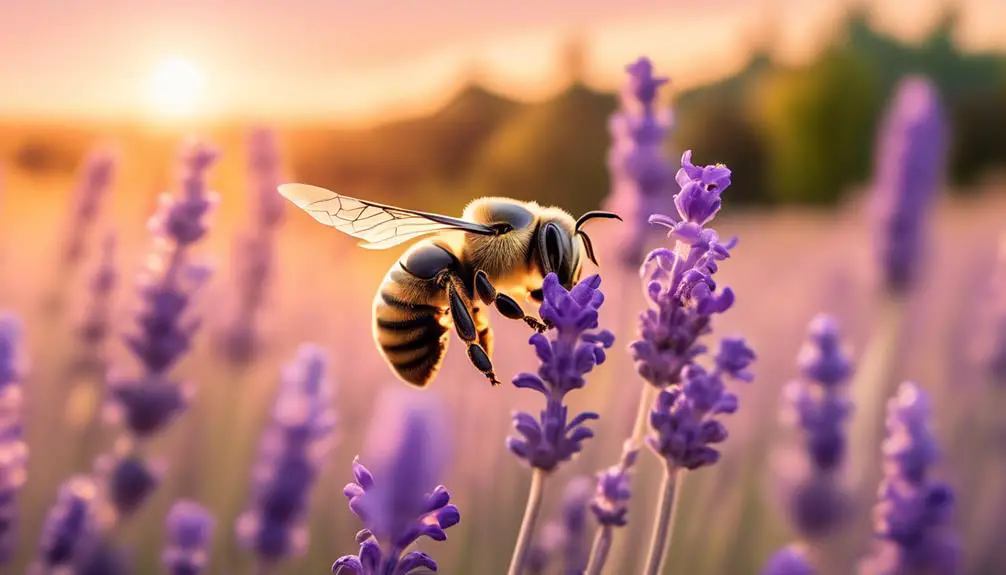
Amidst the myriad flowers that leafcutter bees frequent, you'll find lavender holding a special allure for these industrious pollinators. This attraction isn't random; it's a scientifically explainable phenomenon.
Lavender, scientifically known as Lavandula, releases a unique cocktail of volatile organic compounds (VOCs). These VOCs, particularly linalool and camphor, create a scent that's irresistible to leafcutter bees. You can liken it to a neon sign in a bustling city, beckoning the bees towards its nectar-rich blossoms.
But it's not just the aroma that draws them in. Lavender flowers are shaped in a way that makes it easy for leafcutters to land, feed, and collect pollen. The flower's structure supports the bee's body weight, allowing them to delve deep into the blossoms.
Furthermore, lavender's bloom time aligns perfectly with the leafcutter's active period. They flourish in late spring to early summer, exactly when leafcutters are out in force, forging a harmonious relationship.
Leafcutter Bees and Lavender: The Connection

Having explored the allure of lavender for leafcutter bees, let's now delve deeper into the symbiotic relationship between these industrious insects and the Lavandula plant. This relationship is quite remarkable, as both parties benefit.
Leafcutter bees, like other bees, require pollen and nectar to survive. Lavender plants are an excellent source of both, blooming profusely during the summer months and attracting a variety of pollinators. Leafcutter bees are particularly drawn to the purple blooms, extracting nectar for energy and collecting pollen for their offspring.
In return, the bees play a vital role in the lavender's reproduction. As they forage, pollen clings to their fuzzy bodies and is transferred from flower to flower. This cross-pollination enables the lavender plants to produce seeds, ensuring their propagation.
But the association doesn't end there. These bees also use the lavender leaves to construct their nests. They cut precise, circular pieces from the foliage, which they then carry back to their nesting site.
Benefits of Planting Lavender for Bees
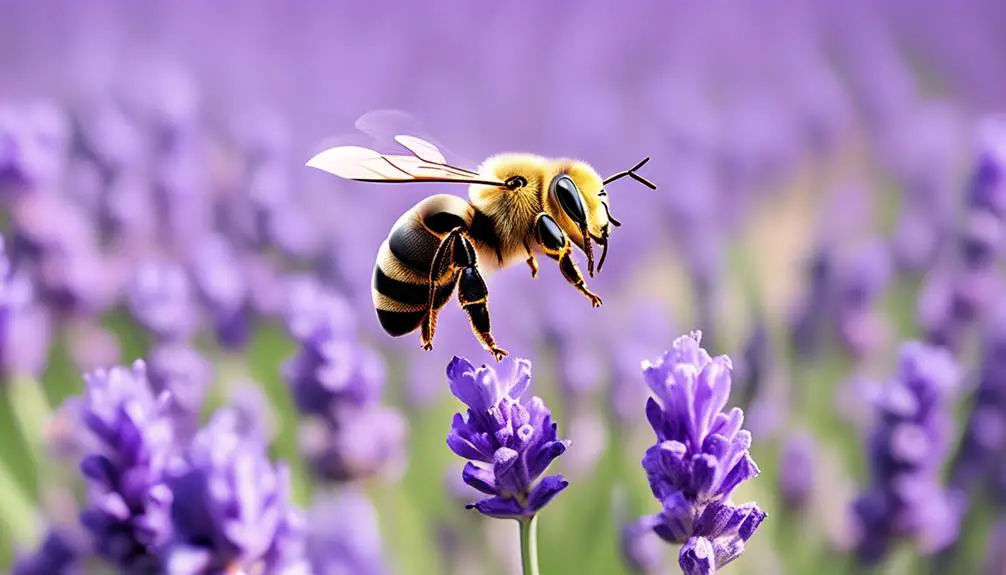
By planting lavender in your garden, you're not only adding a vibrant burst of purple to your landscape, but also providing a vital habitat and food source for local leafcutter bee populations. Lavender plants, with their profuse, aromatic blooms, are highly attractive to these industrious pollinators. You're essentially setting up a bee buffet, rich in nectar and pollen, right in your backyard.
From a scientific perspective, this interaction is mutually beneficial. For the bees, lavender provides sustenance necessary for survival and reproduction. For the lavender, the bees' role as pollinators is crucial for successful seed production. This symbiotic relationship contributes to the overall health and sustainability of your garden ecosystem.
Moreover, encouraging leafcutter bee activity in your garden can boost the pollination of other plants too. These bees are known as 'generalist pollinators', meaning they don't discriminate between plant species. So, your vegetable patch, fruit trees, and flower beds could all benefit from increased pollination.
Tips for Creating a Bee-Friendly Garden

Understanding the mutual benefits of leafcutter bees and lavender can inspire you to create your own bee-friendly garden. There are several strategies you might consider to attract and support these industrious pollinators.
Firstly, diversify your plant selection. Bees are attracted to a wide range of flowering plants, not just lavender. Incorporating native plants can be particularly beneficial, as they often provide more nectar and pollen than non-native species. Aim for a mix of plants that bloom at different times of the year to provide a consistent food source.
Secondly, limit your use of pesticides. These chemicals can be harmful to bees, and can even contaminate the nectar and pollen they collect. If you must use pesticides, apply them late in the evening when bees are less active.
Lastly, provide a clean water source. Bees need water to cool their hives and to dilute honey. A shallow dish with marbles or stones for the bees to land on can work well.
Conclusion
So, you've learned leafcutter bees are drawn to lavender's rich nectar and pollen. Planting this fragrant herb not only enhances your garden's aesthetics, but also promotes bee conservation.
By creating a bee-friendly garden, you're contributing to a healthier ecosystem. Remember, every flower counts. Understanding and supporting these industrious insects, you're playing a key role in sustaining our environment.
So, why not start your lavender patch today?

